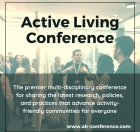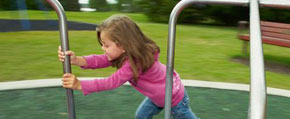We are pleased to announce an exciting new alliance between Active Living Research and GP RED to co-host and coordinate...
Greenway Accessibility and Physical Activity Behavior
Coutts, C. (2008). Greenway Accessibility and Physical Activity Behavior. Environment and Planning B, 35(3), 552-563.
Public health initiatives have made important but relatively modest gains through individual-level and nonecological health-promotion efforts aimed at increasing physical activity. The previously overlooked built environment is now being considered as facilitating or hindering one’s ability to be active. The multiuse greenway is an example of a facility that can support physical activity, but its level of use may be influenced by the accessibility characteristics of the areas surrounding the greenway. In this study, an unobtrusive methodology using GPS and GIS technology was employed to test whether two variables used to measure accessibility, proximity (population density) and opportunities (land-use mixture), predicted the use of greenway segments. The results presented here allow us to confirm that smaller walking and bicycling scales of analysis are better predictors of physical-activity behavior. The results also suggest that solely bringing environmental support for physical activity closer to concentrated areas of population does not necessarily equate to more use. It is important that areas with increased population density have correspondingly increased levels of land-use mixture if increasing physical activity is the goal.
Related Tools & Resources
STAY UP TO DATE
RECENTLY ADDED TOOLS & RESOURCES
MOVE! A BLOG ABOUT ACTIVE LIVING
The "Active Living Conference" aims to break down research and practice silos and...







